Eternal flame
The Paradores of Spain: a Galician excursion
Advertisement
Read this article for free:
or
Already have an account? Log in here »
To continue reading, please subscribe:
Monthly Digital Subscription
$0 for the first 4 weeks*
- Enjoy unlimited reading on winnipegfreepress.com
- Read the E-Edition, our digital replica newspaper
- Access News Break, our award-winning app
- Play interactive puzzles
*No charge for 4 weeks then price increases to the regular rate of $19.00 plus GST every four weeks. Offer available to new and qualified returning subscribers only. Cancel any time.
Monthly Digital Subscription
$4.75/week*
- Enjoy unlimited reading on winnipegfreepress.com
- Read the E-Edition, our digital replica newspaper
- Access News Break, our award-winning app
- Play interactive puzzles
*Billed as $19 plus GST every four weeks. Cancel any time.
To continue reading, please subscribe:
Add Free Press access to your Brandon Sun subscription for only an additional
$1 for the first 4 weeks*
*Your next subscription payment will increase by $1.00 and you will be charged $16.99 plus GST for four weeks. After four weeks, your payment will increase to $23.99 plus GST every four weeks.
Read unlimited articles for free today:
or
Already have an account? Log in here »
Hey there, time traveller!
This article was published 11/05/2024 (573 days ago), so information in it may no longer be current.
I pulled open the wooden shutters and pushed the heavy glass window outward, breathing in the freshness of April’s budding trees. There are birds — I do not know their names — flitting from branch to branch, and somewhere at the bottom of the hills, the Sil River tumbles with the freshet. I ease down onto the stone bench, set in this window alcove and think about history, about more than 1,000 years of history, and wonder, perhaps, if I am taking in the same view of the first monk to call this cell his own. Tonight, I will sleep in this monastery, built by the Benedictines in the 10th century.
If your vision of a trip to Spain includes laying your head down in a castle, medieval fortress, seaside palace or, as I did, a centuries-old monastery, then you’re in luck. The paradores make it possible. The collection of 98 hotels, operated by the country, offer a generous helping of history topped with posh touches — just what every European vacation should be.
The Paradores of Spain are evenly sprinkled throughout the country, reaching south toward Morocco, and northeast for France. And while the entire landscape is downright gorgeous, it’s the northwestern region called Galicia that captured my heart. It rests along the Atlantic coastline then moves into the forested uplands, where the modern world seems to have let the old ways stay just a little bit longer. Still, there are 13 paradores to make your stay sumptuous, some in cities, others in villages and some nestled in the countryside.
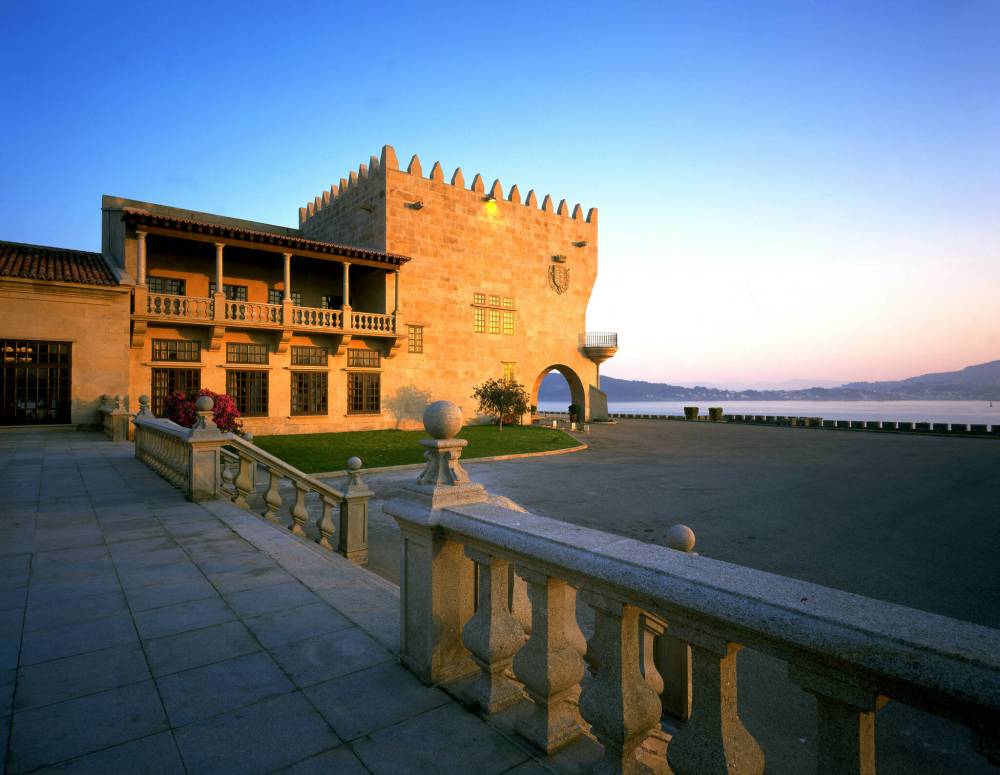
Photos by Shel Zolkewich / Free Press
The Parador de Baiona looks like it’s been there forever, but it’s one of the newer builds that houses a hotel.
Into the countryside
The Parador de Santo Estevo, the monastery where I stayed for the second half of my time in Spain, is about 30 kilometres from the city of Ourense, through forested roadways and down into a river valley. Rugged. Wild. Quiet. Over the centuries, the collection of red-roofed buildings at the site were touched by various styles. There are three cloisters: one Romanesque, one Gothic and one Renaissance, inviting guests to roam, explore and marvel at the varying architecture that’s outfitted with modern furnishing in the common spaces.
The lower floor, in what once served as a wine cellar for the monks, is now a spa offering baths, heated loungers tucked under the curving stone walls and an outdoor hot tub with those unforgettable views. Rooms, once the monks’ cells, are decidedly snug, but outfitted with every modern convenience, plus a view that’s unbeatable. In a gesture of days gone by, I was handed an actual key to my room.
There’s plenty of exploring to be done around the parador, including visiting the monastery of San Pedro de Rocas where moss-covered relics tell stories dating to the fifth century. It’s an ancient and mysterious place where stonework makes a home for moisture-loving flora. The Ribeira Sacra Interpretation Centre next door tells the long story of tradespeople in the area including potters, rope makers and more recently, waffle makers!
Stop for lunch in the town of Parada de Sil at Hotel Restaurante O Balcon Da Ribeira, a favourite of locals who gather for overflowing plates of roast chicken and octopus. There I sampled a traditional soup of Galicia called caldo gallego — thick with white beans, potato and turnip greens — which I have already recreated at home. It’s meant to ward off the chill of a Spanish winter. It should do the trick for Manitoba winters too.
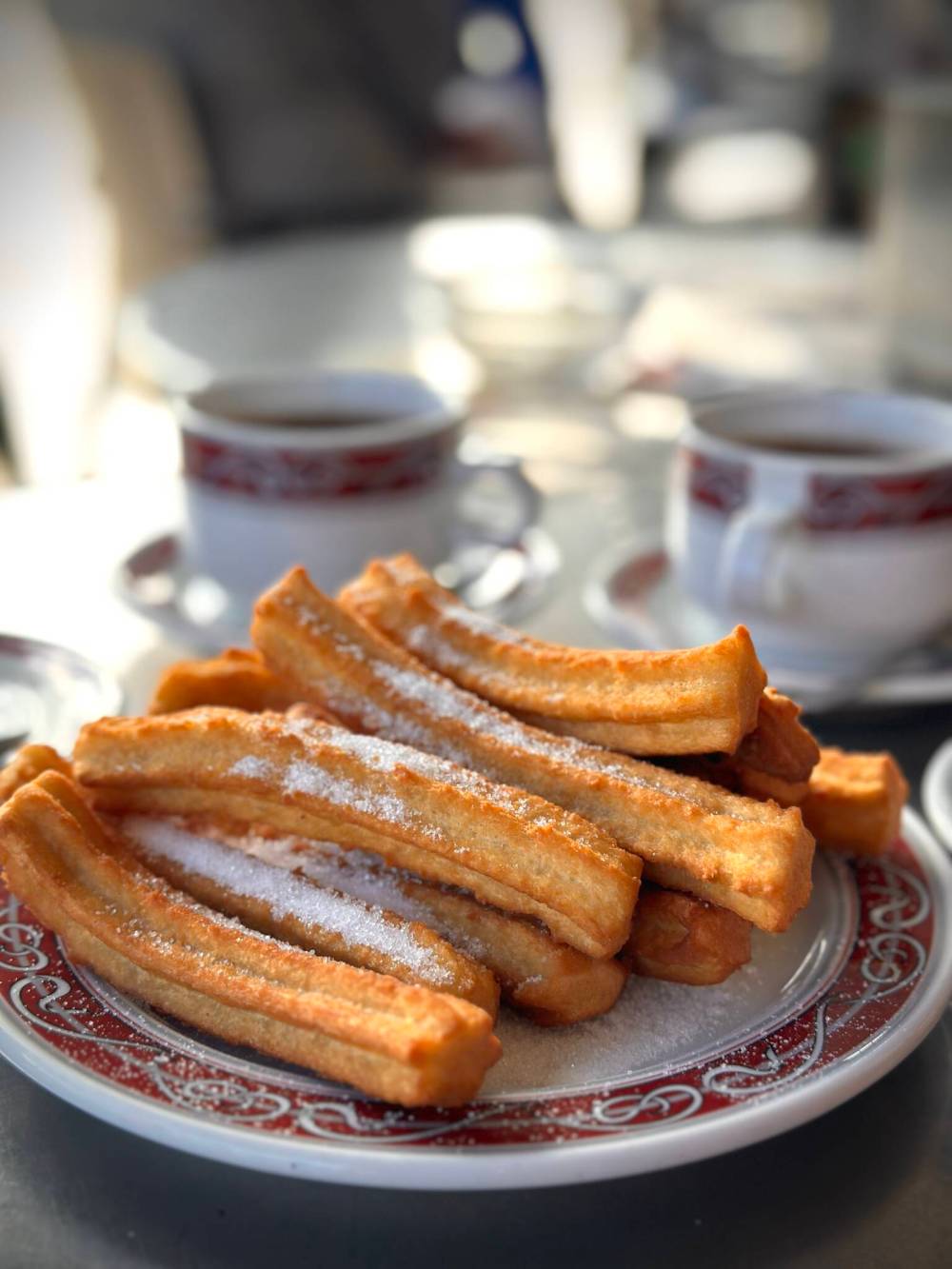
To soak up the seaside vibe, grab an outdoor table at Cafeteria Monterrey and order chocolate and churros.
A city made for walking
From deep in the countryside to the bustling city of Pontevedra, the parador here sits in the historic centre, surrounded by cascading wisteria and the sound of footsteps — the old town has limited motorized access, making it highly walkable and an award-winner for urban mobility. The Parador de Pontevedra is a 16th century Renaissance palace that was once the residence of the Counts of Maceda. It’s palatial at every turn, but especially on the terrace and garden where blooms surround your morning coffee table.
A coastal stop
Over to the coastal and resort city of Baiona, the views can’t get better than this. The Parador de Baiona looks like it’s been there forever, but it’s one of the newer builds that houses a hotel. The existing palace on the site was declared a national monument in 1950 and opened as a parador in 1966 after extensive renovations. Today it’s an elegant property, perched on the seaside that includes a waterfront walkway lined with sweet orange blossoms and an outdoor pool to take in those bay views.
With a population of just over 11,000, Baiona swells to nearly 50,000 for the vacation season, plus it welcomes 30,000 hikers who choose the Portuguese Way as their pilgrimage route on the Camino de Santiago (more on that below). It made its mark in history in 1493 when The Pinta, one of the ships from Columbus’s famous voyage arrived in Baiona, the first place to receive news of the ‘discovery’ of the Americas. A replica of the ship rests in the harbour is an open for tours.
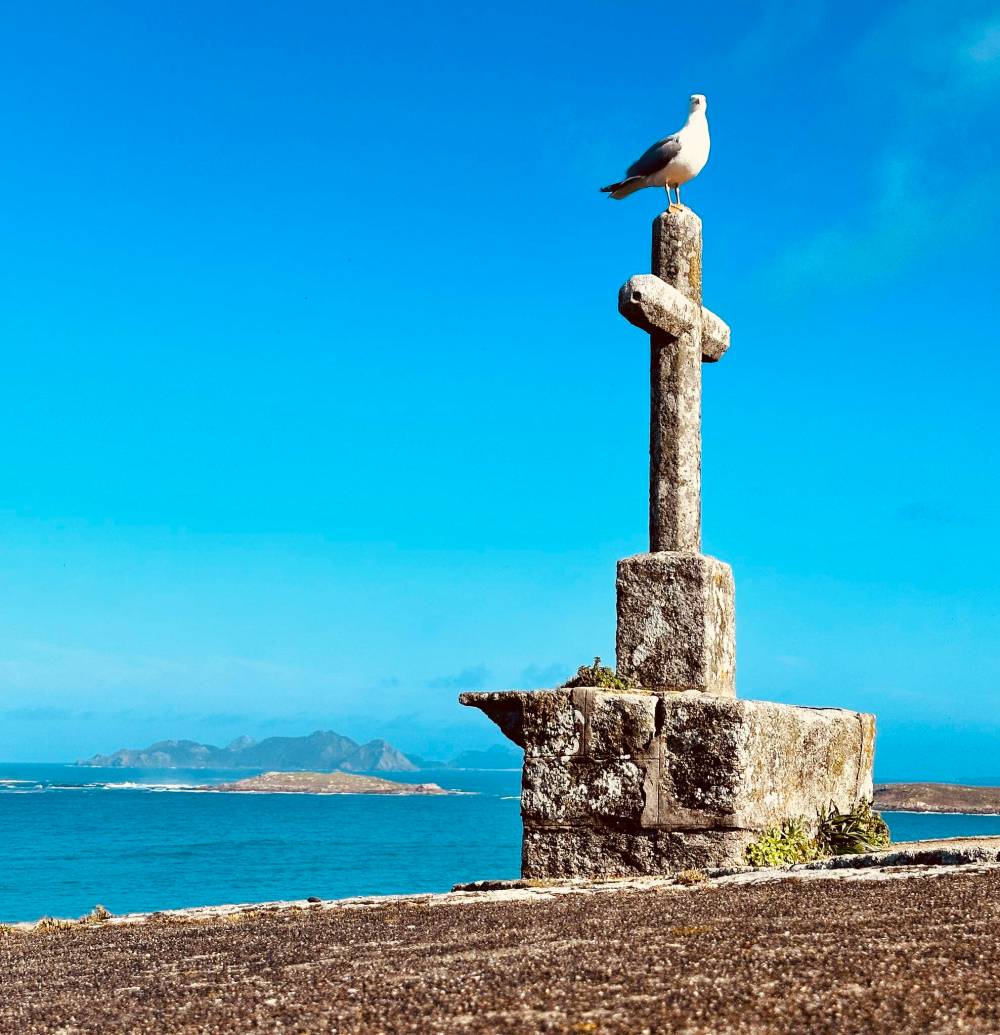
The Parador de Baiona offers a waterfront walkway lined with sweet orange blossoms.
To soak up the seaside vibe, grab an outdoor table at Cafeteria Monterrey and order chocolate and churros. The decadent duo arrives for the rock-bottom price of 3.50 Euros and includes a thick and rich cup of creamy, not-too-sweet chocolate plus a plate of crispy, sugary, hot churros, piled high. I will not soon forget it.
Where the Camino ends
You may have heard of the Camino de Santiago. If not, it’s a network of trails all leading to the shrine of the apostle James in the cathedral of Santiago de Compostela in the city of the same name. Although hundreds of thousands still make the pilgrimage for religious purposes every year, many more do it for other reasons, including a spiritual retreat from everyday life. Throughout every day, pilgrims arrive in the Plaza del Obradoiro, face the cathedral, lay their hands on the symbolic scallop shell and tick off an item on their bucket lists.
If they glance over their collective shoulders, there rests the Parador de Santiago de Compostela, one of the oldest and most luxurious hotels in Spain. It’s one of only two, five-star paradores in the collection. Surprisingly, the sprawling building began life as a utilitarian hospital to treat pilgrims. Today, it makes itself known in the square with a Plateresque façade while inside, multiple cloisters, rooms featuring canopied beds and stone archway, an art museum and the unforgettable Restaurante dos Reis await.
shel@shelzolkewich.com
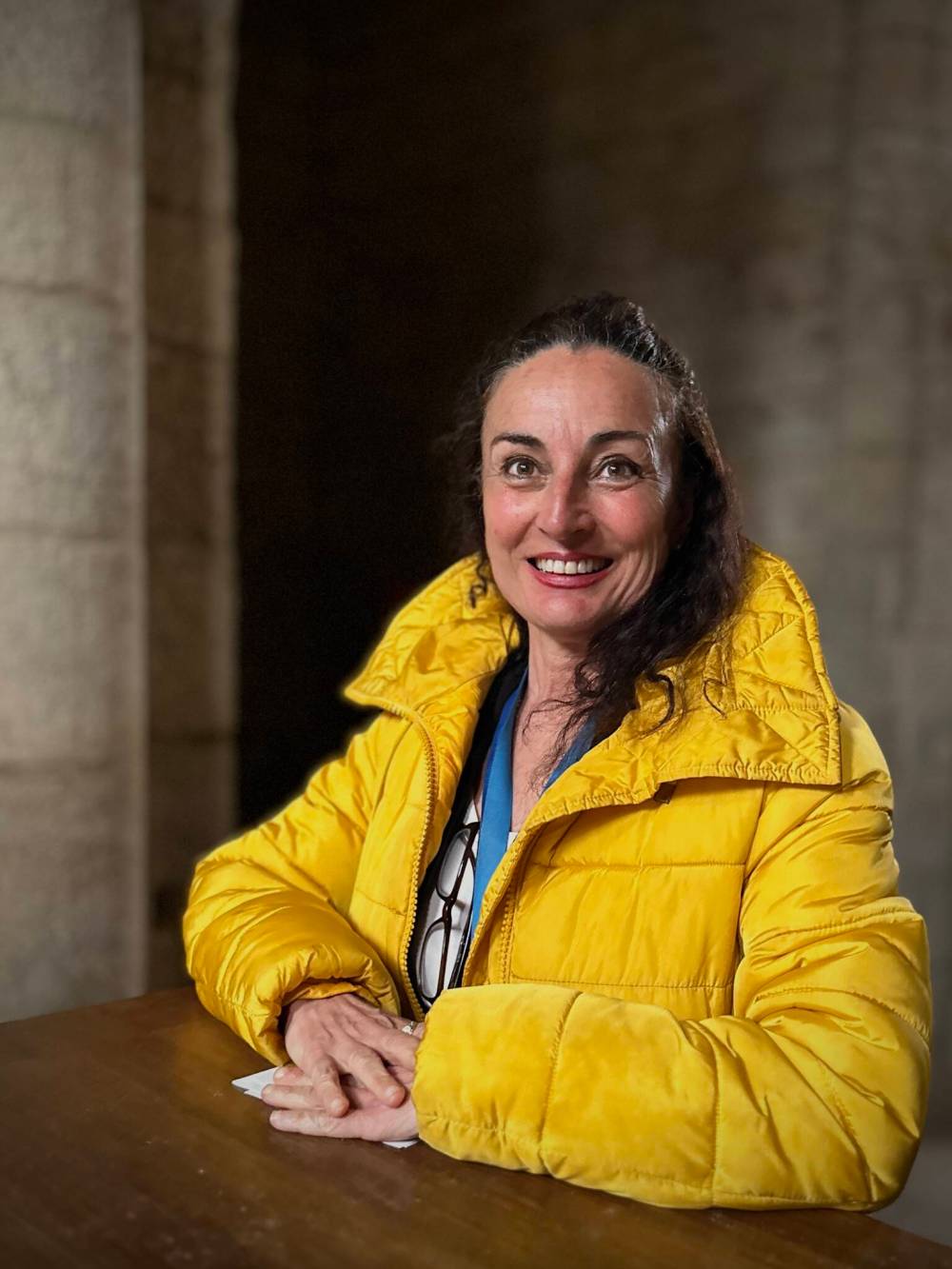
Guide Ana Rodal Alvarez hails from the city of Vigo and makes her home in Santiago del Compostela.
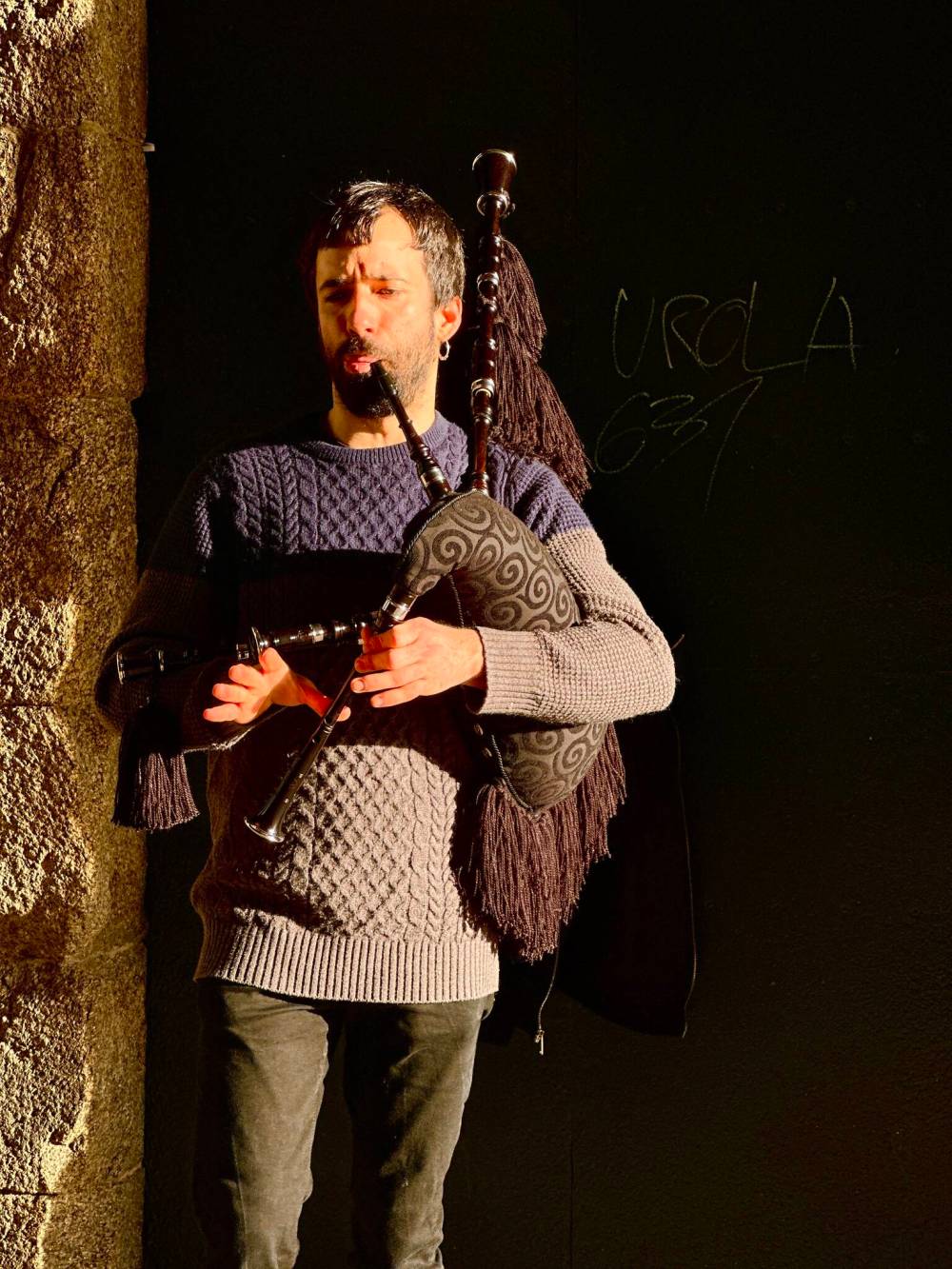
You’ll find many Celtic symbols, words and practices in Santiago del Compostela, including a lone bagpipe player.
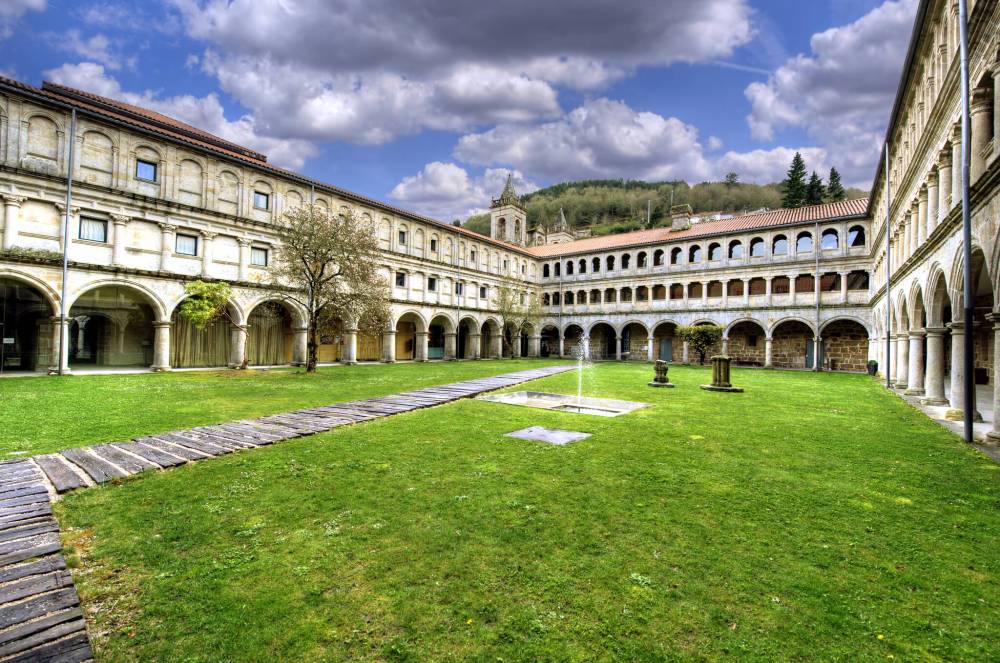
Supplied
Courtyards and cloisters are hallmarks of many paradors, including Parador de Santo Estevo in the Galician countryside.

